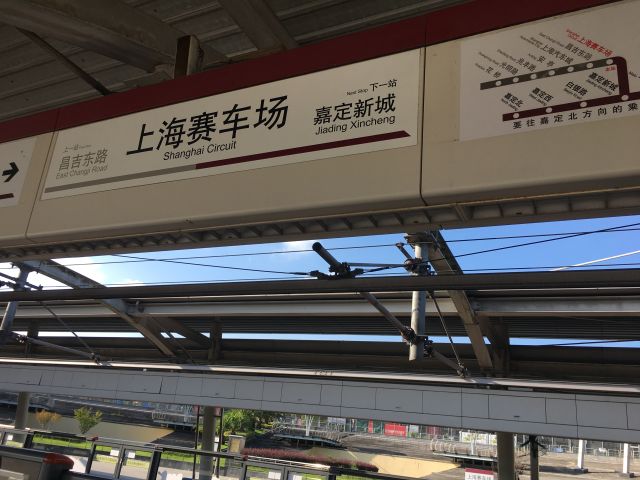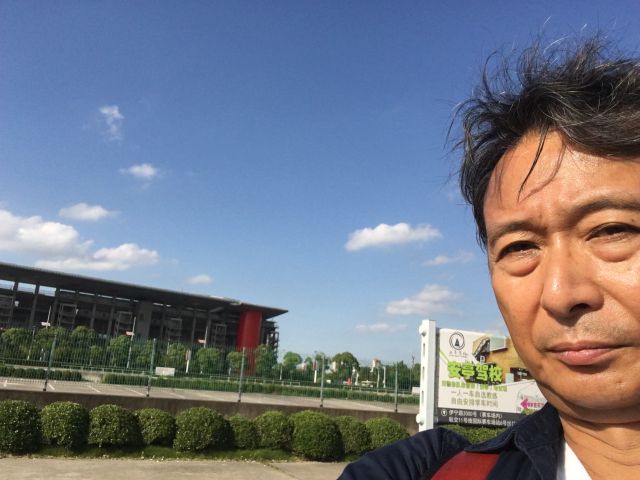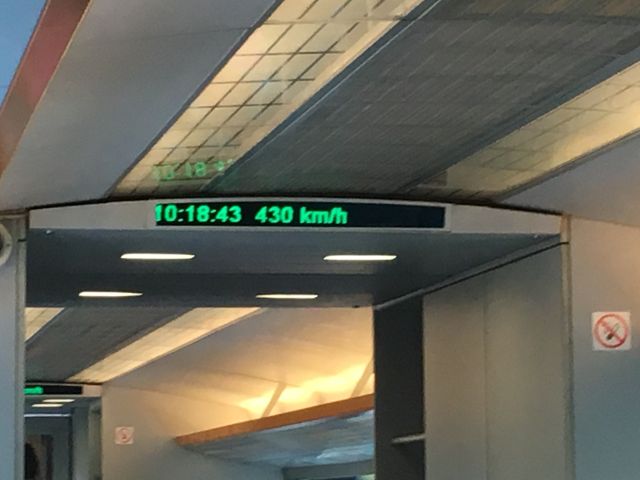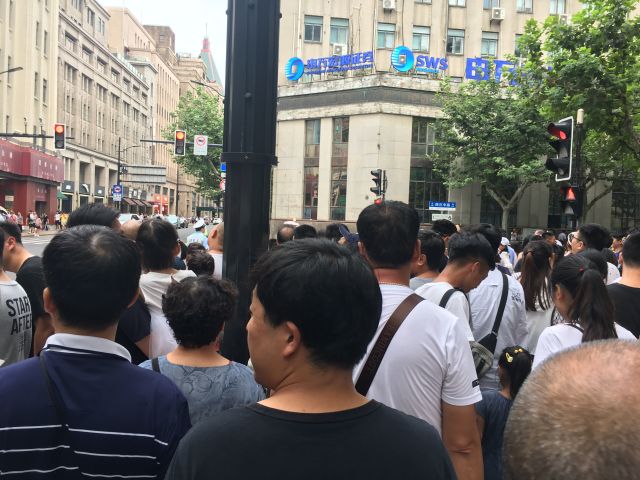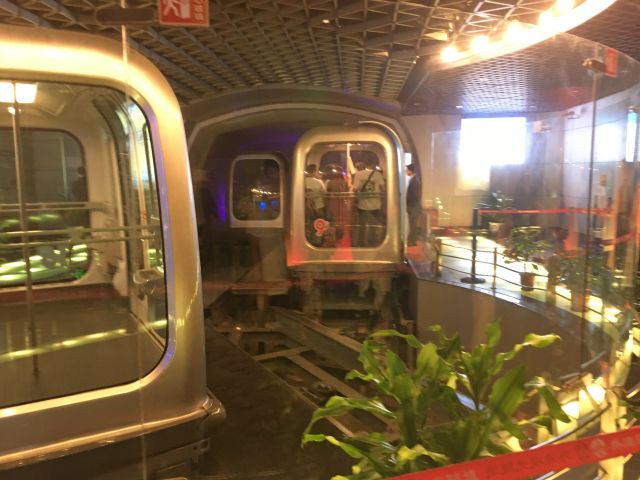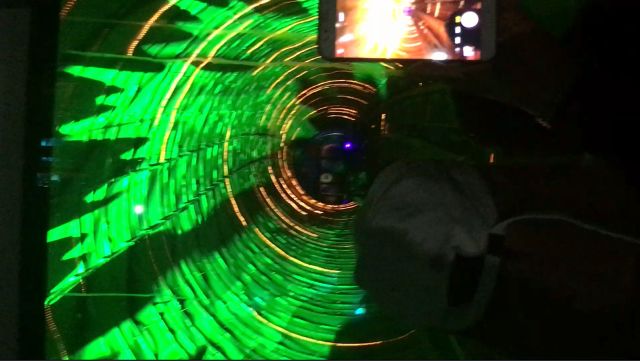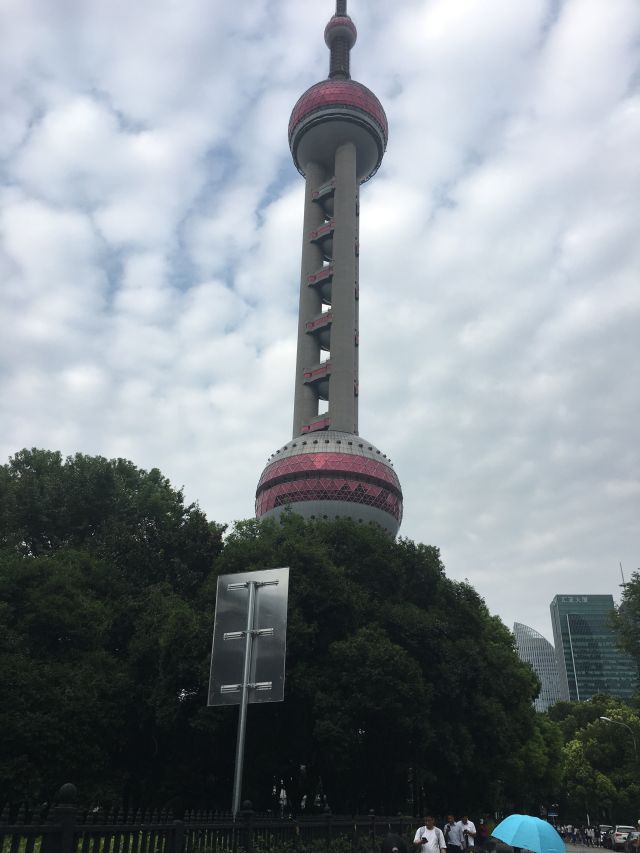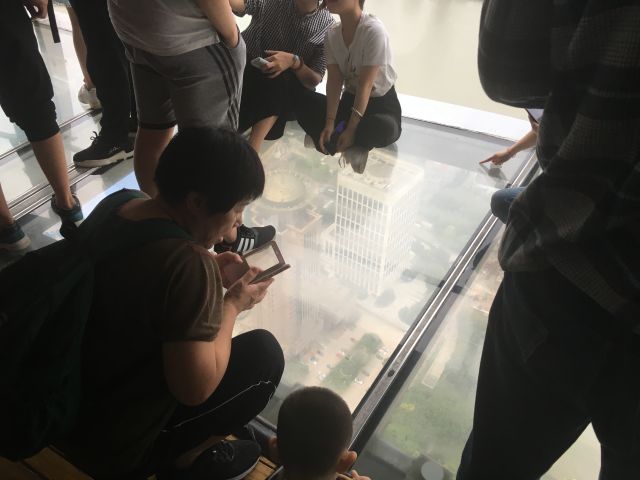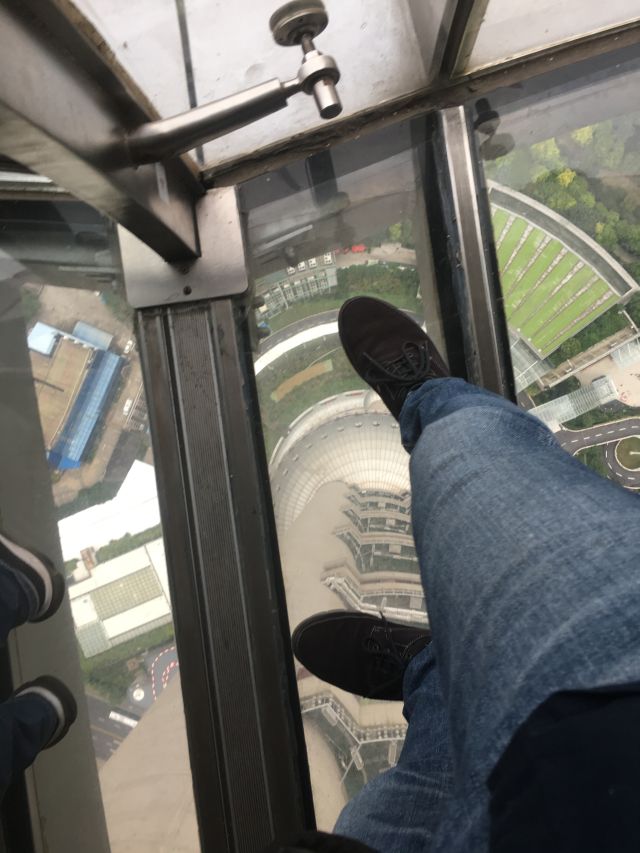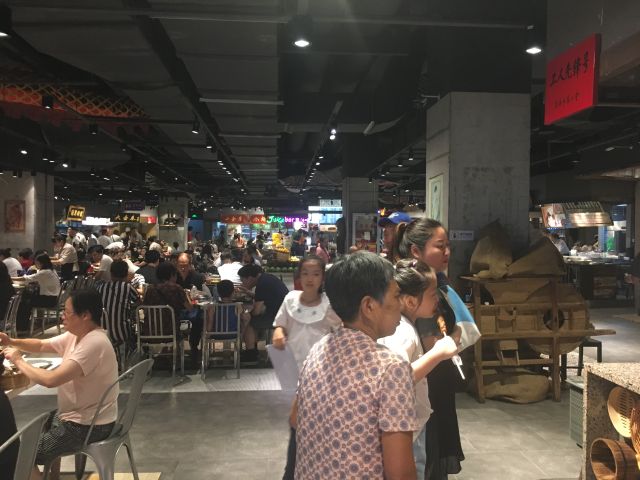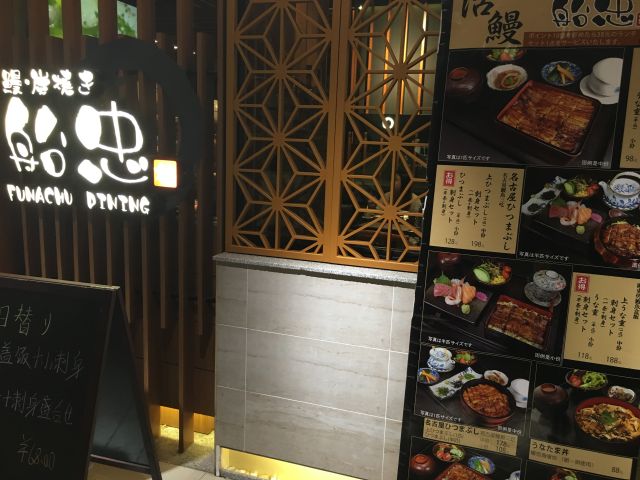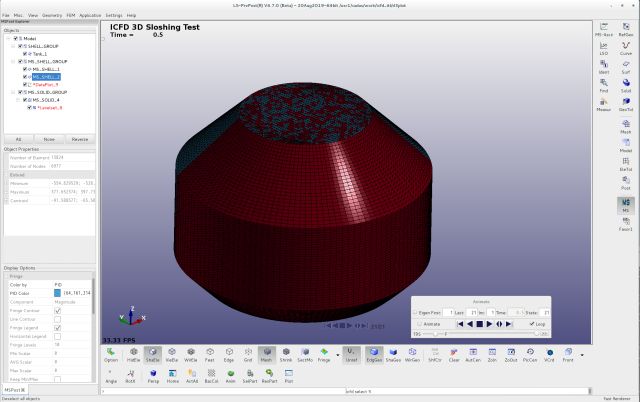8月中旬から、じわっとダウンロードサイトで公開が始まりました。
今日現在入手可能なモジュールは、弊社ダウンロードサイト/LS-DYNA/R11.1
にアップしてあります。
以下リリースノート。
最初に書いておきますが、Implicit_solver Type=30 "MUMPS" が追加された、
を試してみました。Linux版のみです。Windows版にはありません。
でも、Linux版で試した範囲では、Type=30よりも従来のType=2 の方が高速なので
無理して試さなくていいかな、と思います。
MUMPSはフリーで使えるソルバなので、まあ、入れてみたよ、ということでしょうか。
———————————————————————————
This file constitutes revision 0 of the release notes for LS-DYNA version R11.1.0
———————————————————————————
I. LICENSE
The string “REVISION 11” must appear in the LS-DYNA license file in order to run
version R11.0.0. Please contact your LS-DYNA distributor (keys@lstc.com if
you’re a direct customer of LSTC) if you need to have your license updated.
—————————————————————————-
II. DOCUMENTATION
Documentation of R11.1.0 is provided in the R11.0 User’s Manuals which may
be downloaded from www.lstc.com/download/manuals.
For features mentioned in these release notes but which appear to be missing
from the R11.0 User’s Manuals, please refer to the DRAFT User’s Manuals at
www.lstc.com/download/manuals. Please note though that not all the features
in the DRAFT User’s Manuals are available in version R11.1.0.
—————————————————————————-
III. NOTES
The remainder of this file describes what’s been added or fixed in version R11.1.0
since the release of version R11.0.0. The changes are primarily just bug fixes.
The items are arranged by category. Understand that in many cases,
a particular item could fall under more than one category, but in the
interest of brevity, each item is listed only once, under a single category.
Excluding the “Miscellaneous” category, the categories are arranged alphabetically.
The categories are:
*AIRBAG
ALE
*BOUNDARY
Blast
CESE (Compressible Fluid Solver)
*CHEMISTRY
CONTACT
*CONSTRAINED
*CONTROL
Discrete Element Method
EFG (Element Free Galerkin)
*ELEMENT
Forming Analysis
*FREQUENCY_DOMAIN
ICFD (Incompressible Fluid Solver)
Implicit (Mechanical) Solver
*INITIAL
Isogeometric Elements
*LOAD
*MAT and *EOS
MPP
Output
Restarts
*SENSOR
SPG (Smooth Particle Galerkin)
SPH (Smooth Particle Hydrodynamics)
Thermal Solver
XFEM (eXtended Finite Element Method)
Miscellaneous
==============================================================================
________________________ *AIRBAG ___________________
AIRBAG_PARTICLE:
– Support FVOPT=-1,-2 porous leagage option in *MAT_034.
– Add INFLATION option to maintain initial tire pressure by adding mass to the
initial gas in the closed volume over a set number (NPRLX) time steps.
– Extend Joule Thomson (JT) effect to CV (control volume) phase of airbag.
JT (Joule Thomson) effect is a thermodynamic, isenthalpic process that will occur
due to gas expansion through a valve. For gases with negative JT coefficient,
gas after expansion will contain higher energy and produce higher airbag pressure
than from the constant enthalpy assumption. The effect was considered in CPM
particle method and now, the effect is included after switching from particle
to CV mode.
– New feature allows heat transfer between particles and inflator material.
The heat loss from the gas will give a weaker jet impulse.
The initial part temperature is the same as the resident gas temperature.
The feature is turned on when the target part’s specific heat Cp is given.
Time history of part temperature is output to abstat_cpm.
Fix bug in reading *AIRBAG_REFERENCE_GEOMETRY_BIRTH if a 9 character
long parameter was used.
________________________ ALE ___________________
*INITIAL_VOLUME_FRACTION_GEOMETRY with CNTTYP=1:
Fix a bug that prevented more than 10 structures to be initially filled with ALE
materials (ALE groups).
*SET_2D_SEGMENT:
Correct the memory allocation to store edges when there are several distinct
shell parts.
*DATABASE_BINARY_D3PLOT:
For ALE1D beams in d3plot, output pressures, densities and ALE group ids instead
of axial, rs and tr-shear stresses.
________________________ *BOUNDARY ___________________
Fix a bug that creates nonphysical constraints when using
*BOUNDARY_PRESCRIBED_MOTION_SET_BOX with *DAMPING_PART_MASS.
*BOUNDARY_SPC_SYMMETRY_PLANE
Extend feature to permit more than two symmetry planes in a local coordinate system.
________________________ Blast ___________________
*DEFINE_PARTICLE_BLAST:
– Fix bug of not respecting birthtime in particle blast.
– Fix segmentation fault caused by dynamic rebalancing algorithm when only
a few active particles exist in particle blast.
– Fix bug for particle blast if HE particles are defined with shell/solid container.
________________________ CESE (Compressible Fluid Solver) ________________
For the 3D Navier-Stokes equations solver, add a stability strategy (positivity
preserving) to make it more stable.
Complete the positivity-preserving mechanism in the 2D axisymmetric Euler and
Navier-Stokes equations solvers.
For the CESE moving mesh conjugate heat transfer solvers, fix several bugs
that caused these solvers to fail completely. Also, in MPP, a number of
bugs related to the mesh decomposition were fixed.
CESE chemistry solvers:
– Fix a number of bugs related to the mesh decomposition.
– Doing FSI with the chemistry solver for the Euler equations is made more
robust by correcting some memory issues, and increasing the number of
allowed chemical species.
________________________ *CHEMISTRY ___________________
Develop and calibrate new inflator models, especially for KSS, where
the calibration was done with experimental data.
Four additional inflator models are now available:
1) 4 chamber gas phase only model
2) 4 chamber mixture (gas + condensed) model
3) 5 chamber gas phase only model
4) 5 chamber mixture (gas + condensed) model
________________________ CONTACT ___________________
“Interface Pressure” in the intfor file is now returned
to always being positive, which restores the behavior
before r108248.
Fix failure to detect contact between beam and shell edge when using
*CONTACT_AUTOMATIC_BEAMS_TO_SURFACE and the beam diameter is large
compared to the segment size.
Fix pressure output to the ncforc file by MPP segment-based contact (*CONTACT, SOFT=2).
It was outputting wrong numbers.
Enable *CONTACT_2D_AUTOMATIC_TIED… penalty constraints to work when SMP parallel
consistency is active. A blunder caused the ties to fail due to zero penalty forces.
Fix MPP eroding contact when used with shell forms 25 or 26 or with other shells
that have IDOF=3 in *SECTION_SHELL. Jobs were error temrinating in the first cycle.
Fix an error in segment-based contact that could cause a job to hang in the first
cycle if either neighbor segment checking was active (SFNBR>0, *CONTACT) or the
sliding option (SBOPT=4,5, *CONTACT) was used.
Enable entity contact (*CONTACT_ENTITY) to work with tshell elements.
This combination was resulting in an error termination in the input phase.
Add support for death time in *CONTACT_2D_TIED. When the death time is reached,
the ties are released. To prevent penetration of the released nodes, the user
should add another contact definition such as *CONTACT_2D_AUTOMATIC_SURFACE_TO_SURFACE
with a birth time equal to the death time of the tied contact.
Enable segment-based (SOFT=2) contact to output gap values to intfor
(*DATABASE_BINARY_INTFOR).
Fix *CONTACT_2D_AUTOMATIC_TIED when used with selective mass scaling, which is
made active by setting IMSL=1 and DT2MS<0 on *CONTROL_CONTACT.
The problem occcured when selective mass scaling was applied to the nodes that
are tied. Prior to the fix, kinematic constraints were failing.
Fix a memory error during initialization in 2D automatic contact in the case where
there are both 2D continuum elements (with element failure included) and 2D shell
elements.
Enable *CONTACT_2D_AUTOMATIC contact to work well when erosion of 2D cohesive
elements (*SECTION_SHELL, ELFORM=29 or -29) occurs.
Correct mass distribution for shell nodes attached to solid segments for
stability in *CONTACT_TIED_SHELL_EDGE_TO_SOLID.
Fix bugs in ERODING contacts in MPP.
– Fix bug where SLDTHK was not applied to newly-exposed solid faces.
– Fix segmentation fault occurring for some large models with solids only.
– Fix segmentation fault in groupable ERODING contact.
Fix how variable CPARM8 in *CONTACT is applied if STYP and/or MTYP are set to 5.
Both CPARM8 on MPP Card 1 (variable OPT1 only) and and CPARM8 on Optional Card E
are affected.
– Prior to R11.1.0, CPARM8 was applied to all contact types and not just
to *CONTACT_AUTOMATIC_GENERAL, and furthermore, spot weld beam parts on the
master side were always included in the contact treatment irrespective of
the value of CPARM8.
– Now CPARM8 applies only to *CONTACT_AUTOMATIC_GENERAL in accordance with
the User’s Manual.
________________________ *CONSTRAINED ___________________
Reorganize the MPP communication for handling
*CONSTRAINED_INTERPOLATION, which should result
in increased performance in models with a large
number of such constraints.
*CONTROL_RIGID, LMF=1:
Fix seg fault triggered by Lagrange Multiplier joints used with
explicit/implicit switching.
*CONSTRAINED_BEAM_IN_SOLID now supports seatbelt elements.
*CONSTRAINED_SHELL_IN_SOLID can now be used in implicit mechanics.
Fix ineffective PNODE in *CONSTRAINED_NODAL_RIGID_BODY when PNODE<0.
Fix *CONSTRAINED_INTERPOLATION when used with only 3 degrees of freedom. A bug
caused either wrong results or a segmentation fault.
Fix a flaw in temperature-dependent failure of constraint welds defined by
*CONSTRAINED_SPOTWELD. Curve interpolation was using the wrong segment of the curve.
*CONSTRAINED_INTERPOLATION_SPOTWELD (SPR3):
– Extend meaning of SPOTDEL, values larger than one possible now.
– Add option to define part id for visualization beams (PIDVB).
– Add option to modify the type of beam representation (PIDVB<0).
– Enhance part name of beams from just “SPR3” to “SPR3_NSID_xxxxxx”.
– Improve reported masses and time step estimate.
– Improve bending stiffness method to achieve higher stability.
– Increase accuracy of kinematic quantities.
________________________ *CONTROL ___________________
In pore pressure analysis (*CONTROL_PORE_FLUID),
fix internal energy output for solid element types with more than
one integration point e.g. ELFORM=2.
Enhance explicit’s use of inertia relief by adding a second orthogonalization
step for the accelerations.
Disable *INITIAL_AXIAL_FORCE_BEAM and *INITIAL_STRESS_SECTION when IDRFLG=-999
in *CONTROL_DYNAMIC_RELAXATION.
Enable the SPOTHIN and SWRADF parameters on *CONTROL_CONTACT to work when spot welds
are modeled by sharing nodes with the shell parts that are welded. This has not
worked until now because we searched for shells to thin through the tied contact,
and tied contact is not needed when nodes are shared.
Fix a segmentation fault caused by freeing memory that is needed if a job terminates
by DTMIN>0 on *CONTROL_TERMINATION and ERODE=0 on *CONTROL_TIMESTEP.
Add option IRGEN on *CONTROL_ENERGY to switch energy computation
for *INITIAL_FOAM_REFERENCE_GEOMETRY off (1) or on (2, default).
Add option HISNOUT to *CONTROL_OUTPUT (card 4, item 7) that invokes
names of history variables to be listed in d3hsp (HISNOUT=1)
or in d3hsp and an additional XML file called hisnames.xml (HISNOUT=2).
Add new options for drill constraint force on *CONTROL_SHELL.
1. DRCPRM<0 refers to a *DEFINE_FUNCTION with FID=|DRCPRM|
2. New option DRCMTH on optional card 5, first entry.
Extend cohesive element flag ICOH=1 (*CONTROL_SOLID), so that element
erosion also works if neighboring elements from a tied contact failed.
*CONTROL_ADAPTIVE, *CONTROL_SOLID:
Issue a error message when using automatic sorting (ESORT>0) in 3D adaptivity.
________________________ Discrete Element Method ___________________
Fix bug in simple and small restarts in DEM (multi-core MPP).
Fix incorrect reporting of “number of nodes and DEM generated” in d3hsp.
Fix bug in DES injection to avoid too large a mass flow rate.
Fix bug in writing of demfor (*DATABASE_BINARY_DEMFOR) in MPP.
________________________ EFG (Element Free Galerkin) _____________
Add keyword *CONTROL_MPP_DECOMPOSITION_DISTRIBUTE_EFG_SHELL
to turn on/off the special decomposition that distributes the EFG shell elements
(ELFORM=41) across all CPUs (default is on).
Interactive 3D adaptivity (see *CONTROL_REMESHING_EFG) is turned off when using
EFG ELFORM=41.
________________________ *ELEMENT ___________________
*ELEMENT_DIRECT_MATRIX_INPUT: superelements now are able to generate spcforc output.
Fix bug in calculation of drilling energy calculated for triangular shells
(and written as hourglass energy) in implicit. Energy was erroneously accumulated
every iteration.
Fix a bug in *PART_MOVE which causes nonphysical distortion for 10-node tet elements.
Fix a bug that causes spurious stresses when using shell ELFORM=5
with implicit solver and large rotations.
Fix a bug in the computation of the internal energy of shells with ELFORM=15 and
NIP=4 (*SECTION_SHELL).
Fix a bug in the computation of the external work of shells with ELFORM=14 in glstat.
Fix bugs in mass output to d3hsp and kinetic energy output to matsum for beams
with ELFORM=8 (*SECTION_BEAM, axisymmetric).
Fix an error when tshell ELFORM 3 and laminated shell theory (*CONTROL_SHELL,
LAMSHT=4/5) are active, but there is no *PART_COMPOSITE in the model.
The error causes an immediate error termination.
Fix bulk viscosity of tshell forms 1, 2, and 6. Unstable behavior was likely.
Add support for shell formulation -16 for *PART_COMPOSITE.
Bugfix for *PART_STACKED_ELEMENTS: Layer positions were
shifted when shell elements with NLOC=-1 in outer layers.
Fix segmentation fault in Cosserat Point Element (hourglass type 10 for the
type 1 solid).
*INCLUDE_UNITCELL:
Fix bug of writing out new input files (OUPT=1) with automatically generated unitcell
model when the input/include file names contain path information.
Solid ELFORM=60 is implemented. This 1-point, 4-node tetrahedral element
has the following characteristics:
Aside from including additional averaging of
element volumetric locking, element type 60 is identical to type 10. In contrast
to type 13, type 60 averages the normal stress between two adjacent elements,
so nodes can be shared between the different materials with different bulk
modulus. Currently, solid ELFORM 60 supports explicit analysis but is still under
development for implicit analysis.
________________________ Forming Analysis __________
Previously when using SMP executable with keyword *CONTROL_FORMING_ONESTEP, there
were always two output files respositioned.k and onestepresult, both of which were
not present when using MPP executable. Starting from this revision, both SMP and
MPP executables will produce two output files repsitioned.k and onestepresult.
Fix bug for the keyword *DEFINE_BOX_ADAPTIVE, which leads to segmentation fault
when a very large number of elements are present in the problem.
Fix bug for output of the binary file dynain.bin when using MPP executable with
keyword *INTERFACE_SPRINGBACK_LSDYNA_THICKNESS.
*CONTROL_FORMING_TRIMMING and *DEFINE_CURVE_TRIM_3D:
– Fix bug where trimming did not occur in a 1 core MPP run.
– Write “Normal Termination” to mes0000 for MPP.
________________________ *FREQUENCY_DOMAIN ___________________
*FREQUENCY_DOMAIN_RANDOM_VIBRATION:
Append to psd_curve_print, to avoid overwritting of the files when multiple
time domain excitations are present.
*FREQUENCY_DOMAIN_SSD:
– Add computation with torque and rotational DOF excitation for SSD (VAD=8,9,10,11),
with local damping (DMPFLG=1).
– Implement a new scheme to run ERP (Equivalent Radiated Power) computation faster,
if the binary fringe plot databases d3ssd and d3erp are not required (BINARY=0 in
*DATABASE_FREQUENCY_BINARY_D3SSD and *DATABASE_FREQUENCY_BINARY_D3ERP).
________________________ ICFD (Incompressible Fluid Solver) ______________
Prevent the output of Boundary Layer progress when the output level is low.
See *ICFD_CONTROL_OUTPUT.
Prevent a floating point exception when computing thermal fluxes.
See *ICFD_DATABASE_TEMP.
Fix the imposition of normal velocity at the inflow. The corners and ridges close
to corners had velocities not aligned with the face due to the normal. If the faces
are aligned with the axis, it is better to use dof 1,2,3.
See *ICFD_BOUNDARY_PRESCRIBED_VEL.
Fix wrong assignment of boundary PIDs for BL nodes on BL_SYM walls. *MESH_BL_SYM.
Fix issue for multi-phase problems. There were instabilities when there was an
interface between fluids with different density. When See *ICFD_MAT.
Speed up the output of FLUX and HTC. See *ICFD_DATABASE_HTC, *ICFD_DATABASE_FLUX.
Fix the HTC calculation in user defined mesh. See *ICFD_DATABASE_HTC.
________________________ Implicit (Mechanical) Solver _______
*CONTROL_IMPLICIT_SOLVER:
Add solver option LSOLVR=30 based on the public solver MUMPS (version 5.2.0).
Solver 30 can be used as a direct solver (similar to solver option LSOLVR=2) or
as a hybrid direct/iterative solver using the new parameter RPARM5.
*CONTROL_IMPLICIT_SOLVER:
Change the default convergence criteria for iterative solvers (solver options
LSOLVR=22-26):
Parameter R11.0 R11.1
——— —– —–
IPARM1/(MAXITER) 500 10000
RPARM1/(ABSTOL) 1e-10 1e-12
RPARM2/(RELTOL) 1e-04 1e-08
*CONTROL_IMPLICIT_EIGENVALUE:
The addresses for writing the d3eigv database in MPP for models
with 8-noded shell elements were wrong. As a result, the d3eigv database would
probably fill the i/o system causing an abnormal termination.
The i/o address computation is now correct.
*CONTROL_IMPLICIT_ROTATIONAL_DYNAMICS and *CONTROL_IMPLICIT_EIGENVALUE:
Enable the computation of Campbell diagrams for implicit rotational dynamics as
part of the intermittent eigenvalue capabilities. Write all eigenvalues
of one Campbell diagram analysis into one eigout file.
Correct implicit’s handling of SPC constraints on shared nodes in MPP that are
also involved in tied contact.
Correct the construction of rigid body node lists for parts involving the 20-node
solid/hex element. This fixes issues with implicit constraint handling.
Reduce size of d3eigv by not adding rotational DOFs when none are present in the model.
Correct reading in a list of modes for *CONTROL_IMPLICIT_INERTIA_RELIEF.
Selecting MMD (*CONTROL_IMPLICIT_SOLVER with ORDER=1) is a really bad choice
for MPP implicit. We disabled the MMD option and switched to Metis for MMP execution.
Enhance implicit constraint processing to accept function definitions for motor movement.
This impacts the use of *CONSTRAINED_JOINT in implicit mechanics.
Correct the stress output for beams using a non-default value for BEAMIP in
*DATABASE_EXTENT_BINARY. Modal dynamics was erroneously ignoring BEAMIP and
instead using a hard coded value of 6.
Multi-step linear implicit (NSOLVR=-1) had a management error for the case where
only one step was being taken (step size = termination time).
This was fixed by automatically changing to NSOLVR=1 in such a case.
Added Sectoral Symmetry in eigenvalue analysis (EIGMTH=111 in *CONTROL_IMPLICIT_EIGENVALUE).
Correct MPP processing of *PART_MODES option of ANSID .ne. 0.
The node list for this option needed to be sorted and logic adjusted
so that all processes, even those with no such nodes, be involved
in the communication.
If thermal only solution chosen then turn off all implicit mechanics.
Apply shifting and scaling of the standard eigenvalue problem. This
makes the solution of the eigenvalue problem (*CONTROL_IMPLICIT_EIGENVALUE) more robust.
Implicit mechanics is no longer supported in single precision SMP. It was never
supported in single precision MPP.
Correct MPP postprocessing for *CONTROL_IMPLICIT_MODES. The wrong global number of rows
was being used.
Restore final memory report for implicit SMP jobs. Logic was based on old memory
allocation scheme instead of new dynamic memory allocation.
Eliminate the problem with dense columns in MMD (*CONTROL_IMPLICIT_SOLVER, ORDER=1).
If the model is using *CONTROL_IMPLICIT_INERTIA_RELIEF, the linear equation solver
was switched o the direct solver methods (LSOLVR=2). We modified this to restore
the user specified linear equation solution option which now allows the user to
use other solver options including the new iterative solver options.
Add error checking on nodes for *CONTROL_IMPLICIT_MODES to make sure they are deformable.
Correct an inefficiency for implicit when there are many AutoSPC constraints in MPP.
A linear search through the AutoSPC constraints was replaced with a binary search.
Correct the collection of resultant forces for tied contact that use _OFFSET.
Other tied contacts such as _CONSTRAINED_OFFSET were correct.
Adjust reading of d3eigv for modal dynamics for the case where the modes are
computed and then immediately used — all with stresses included.
Account for inertia relief modes in MPP for the computation of forces from constraints.
Correct MPP communication error associated with implicit loading constraints for
*BOUNDARY_PRESCRIBED_MOTION_FINAL_GEOMETRY.
Fix implicit element stiffness of shell elements when used with laminated shell
theory, and when also using anisotropic material models 22, 34, 40, 54, 55, or 58.
In certain cases, the shear stiffness was too small.
Fix implicit beam spot weld elements (*SECTION_BEAM ELFORM=9) when used with NF>0
on *MAT_SPOTWELD. The averaging of the stress was causing the model to converge
to the wrong solution with beam forces too low.
________________________ *INITIAL ___________________
Fix bug in the *INITIAL_STRESS_TSHELL module
of the dynain output file. For tshells with 6-10 integration points
through the thickness, the z-coordinates of the integration points (written
with the stresses) were incorrect.
Fix incorrect rotational axis when using *PART_INERTIA and
*INITIAL_VELOCITY_GENERATION with IRIGID=1 and the rotational axis is defined using
nodes NY,NZ on Card 2 of *INITIAL_VELOCITY_GENERATION.
Enable plane strain and axisymmetic elements (*SECTION_SHELL, ELFORMs 13,14,15)
to be have stress initialization by *INITIAL_STRESS_SHELL for materials that use
equations of state (*EOS). Stress initializaion to the wrong elements could occur
if there were multiple parts in the model.
Fix the reading of initial strain data (*INITIAL_STRAIN_TSHELL) for tshell forms
other than ELFORM=1. A strain transfomation was missing so the initialization
was incorrect.
*SET_NODE_LIST_GENERATE and *INITIAL_VELOCITY_GENERATION:
Fix problem of missed nodes from _LIST_GENERATE so initial velocity can be applied to
all nodes from _LIST_GENERATE.
________________________ Isogeometric Elements ___________________
*LOAD_NURBS_SHELL: Make the coding consistent with the User’s Manual by reading
Card 1.1 (variables CID, V1, V2, V3) only when LTYPE=TRACT
________________________ *LOAD ___________________
*USER_LOADING_SET: Fix a bug in load type LTYPE=TEMPTN (nodal temperature).
Fix output to nodfor when using *LOAD_SSA.
External loads on rigid bodies (*LOAD_RIGID_BODY) and nodes (*LOAD_NODE) are
output to bndout (*DATABASE_BNDOUT) for implicit.
Fix error in reading free format (comma-delimited) input for *LOAD_THERMAL_VARIABLE.
________________________ *MAT and *EOS ______________
Fix bug for *MAT_ARUP_ADHESIVE/*MAT_169, the
“interfacial failure” option (TMAXE, SMAXE) was failing to recompute the
free edges of the adhesive bond after element failure.
Fix bug in *MAT_HYSTERETIC_REINFORCEMENT/*MAT_203 affecting beam elements with
erosion parameters set (EPDAM1 and EPDAM2 non-zero, with DRESID equal to zero).
When the beam reached its erosion limit, error termination could occur or
unexpected failure of the whole model. This bug did not affect shell elements,
only beams. A workaround is to use *MAT_ADD_EROSION to delete the elements
instead of *MAT_203’s erosion capability.
Make *EOS_MURNAGHAN/*EOS_019 compatible with *INCLUDE_TRANSFORM.
Fix bug in *MAT_CSCM/*MAT_159 where rotation with *INCLUDE_TRANSFORM overwrote the
variable D2.
An 8th history variable is added into *MAT_BARLAT_YLD2000/*MAT_133 to allow users
to include an additional shift on the effective plastic strain when simulating the
isotropic hardening behavior. This shift can be used to account for the material
mechanical property changes due to evolution of stored energies if the material
undergoes mechanical forming before the heat treatment. This feature is only available
for shell elements with the input HARD < 0 (the table look-up hardening option).
Fix seg fault when using *MAT_PIECEWISE_LINEAR_PLASTICITY/*MAT_024 for Hughes-Liu
beam (ELFORM=1) in implicit analysis.
Make *MAT_GENERAL_NONLINEAR_1DOF_DISCRETE_BEAM/*MAT_121 work with
*INITIAL_STRESS_BEAM.
Add *MAT_076/MAT_GENERAL_VISCOELASTIC for shell type 13 (plane strain) with NIP=4.
Fix seg fault when using *MAT_147/*MAT_FHWA_SOIL with tshell formulations 3,5,7.
Output fitted data to curveplot file for *MAT_HYPERELASTIC_RUBBER/MAT_077_H
when order of fit N is > 1.
Fix effect of FBRT on tensile strength, XT, for *MAT_ENHANCED_COMPOSITE_DAMAGE/*MAT_055.
FBRT should only affect the tensile strength upon compressive maxtrix mode failure.
Fix ineffective load curves LCSRA LCSRB LCSRC LCSRAB LCSRBC LCSCA on Card 7
of *MAT_MODIFIED_HONEYCOMB/*MAT_126.
Error terminate with message, INI+484, if LOG_INTERPOLATION is invoked for
*MAT_PIECEWISE_LINEAR_PLASTICITY/*MAT_024 and the strain rate for the table
defined by LCSS is negative.
Fix ineffective *LOAD_THERMAL_CONSTANT when used on *MAT_106/
*MAT_ELASTIC_VISCOPLASTIC_THERMAL.
Fix ineffective FAIL<0 flag for *MAT_MODIFIED_PIECEWISE_LINEAR_PLASTICITY/*MAT_123,
i.e. using user-defined failure subroutine, matusr_24 in dyn21.F, to determine
failure.
Fix output to elout for solids using *MAT_PAPER/*MAT_274 and CMPFLG>0 in
*DATABASE_EXTENT_BINARY.
Allow *MAT_065/*MAT_MODIFIED_ZERILLI_ARMSTRONG to compute the flow stress using a
more general form by using power exponent, m, of the eff plastic strain instead
of the square root of the eff plastic strain as per equation 22.52.1 of the
Theory Manual.
Fix seg fault when using *MAT_ADD_EROSION for *PART_COMPOSITE when the
first layer of the *PART_COMPOSITE is not using *MAT_ADD_EROSION.
Fix incorrect direction of thermal expansion when using *MAT_NONLINEAR_ORTHOTROPIC/
*MAT_040 with *MAT_ADD_THERMAL_EXPANSION.
Fix contact penetration after element erosion when using *MAT_110/
*MAT_JOHNSON_HOLMQUIST_CERAMICS with eroding contact.
Fix a bug that causes spurious stresses for tet elements (*SECTION_SOLID,
ELFORM=4,10,13,16) when used with *MAT_ANISOTROPIC_VISCOPLASTIC/*MAT_103.
Add the energy leak feature (LCID) in *EOS_004 and *EOS_008 (similar to *EOS_006).
Enable *MAT_ADD_THERMAL_EXPANSION to work in tshell elements when the analysis
is structural only. Some code was missing causing bad behavior and wrong results.
Fix the behavior when a user set TRUE_T=0 on *MAT_SPOTWELD when using single brick
element spot welds and OPT=0, 6, or 7. For solid weld assemblies and single bricks
with other failure options, TRUE_T=0 is equivalent to leaving the field blank in
which case no modification is done to the moment calculation when calculating weld
failure. However, single bricks with OPT=0, 6, and 7 have been using the zero value
to modify the moment which eliminates all shear contribution. Now all weld options
have the same behavior and are consistent with the user’s manual.
Enable user defined weld failure with OPT=12 in *MAT_SPOTWELD to be used with
solid weld assemblies in MPP. Jobs would terminate with error message OPT+1063
unless all processes had at least one such weld on it.
Fix spot weld assemblies that use OPT=12 in *MAT_SPOTWELD. An error was causing
OPT=12 to not work at all.
Fix the use of *MAT_ADD_DAMAGE_DIEM with *MAT_PIECEWISE_LINEAR_PLASTICITY and
tetrahedral elements with ELFORM=13 on *SECTION_SOLID. The damage calculation
used bad data leading to a wrong result.
Fix *MAT_128/*MAT_HEART_TISSUE for tshell forms 3, 5, and 7. Initializaion of
the F tensor was missing causing a first cycle termination. This material is not
available for the other tshell forms.
*MAT_LAMINATED_COMPOSITE_FABRIC (*MAT_058):
– Fix bug when using a curve (LCEFS) to define effective failure
strain as a function of strain rate for shells.
– For tshell formulations 1 and 2, fix bug when using curves to define
stiffnesses EA, EB and GAB.
*MAT_LAMINATED_FRACTURE_DAIMLER_CAMANHO (*MAT_262):
Add flag “DSF” (Card 3, Column 7) that controls the failure of an
integration point based on in-plane shear failure.
This was added to be able to reinstate the behavior of this material model
prior to the fix in r117876.
*MAT_LAMINATED_FRACTURE_DAIMLER_PINHO/CAMANHO (*MAT_261/262):
– Fix bug in shells that may have appeared if this material was
used in *PART_COMPOSITE with a different material model located at first
integration point. Prior to this fix, the element deletion of
the element did not work as it should.
– Fix bug when using table for defining strain rate dependent fracture
toughness values with respect to characteristic element length.
*MAT_136(_OPTION)/*MAT_VEGTER(_OPTION):
– Correct thinning behavior in plasticity.
– Fix yield locus calculation if the hardening behavior is not decribed by
a load curve.
*MAT_270/*MAT_CWM:
– Add input variable POSTV to control which extra history variables are output.
– Write names of extra history variables if requested by
variable HISNOUT in *CONTROL_OUTPUT.
– Add cut-off temperature defined by variable ANOPT for thermal expansion.
Add *MAT_258/*MAT_NON_QUADRATIC_FAILURE as potential weld partner material for
PROPRUL=2/3 of *DEFINE_CONNECTION_PROPERTIES.
Allow LOG strain rate interpolation for curves DLCSN, DLCSB, and DLCSS
of *DEFINE_CONNECTION_PROPERTIES. Activated by entering a negative
first abscissa value.
An R11.0 modification now also works for solid element assemblies
(*DEFINE_HEX_SPOTWELD_ASSEMBLY):
Add failure function terms (normal, bending, shear) as arguments
of functions in *DEFINE_CONNECTION_PROPERTIES with PRUL.ge.2.
Fix spotweld clusters/assemblies when *DEFINE_CONNECTION_PROPERTIES
with PRUL>=2 and *MAT_100_DA with negative CON_ID is used.
Minor change for GISSMO output with *DEFINE_MATERIAL_HISTORIES:
“Damage,1” gives damage parameter D (hisvar # ND).
Always fill history variable ND+8 (instability measure F) for GISSMO.
And use that value if *DEFINE_MATERIAL_HISTORIES calls for “Instability”.
And use history variable ND+18 (effective damage) for “Damage”.
Fix for *EOS_JWL when the two options _AFTERBURN and _TITLE
are used together.
Add temperature dependence to *MAT_ADD_DAMAGE_GISSMO:
Parameters LCSDG and ECRIT<0 can now refer to *DEFINE_TABLE_3D,
where failure/critical strain is a function of temperature (TABLE_3D),
Lode parameter (TABLE), and triaxiality (CURVE).
HISVN must be zero in that case.
Add new option to *MAT_ADD_DAMAGE_GISSMO:
LCSRS can now be a table to describe scale factor
as a function of plastic strain rate and triaxiality.
*MAT_ADD_DAMAGE_GISSMO now supports crash front method (SOFT reduction).
If elements are eroded, then neighboring elements get their critical
strain and failure strain reduced.
Add new option (variable P4) for *MAT_ADD_DAMAGE_DIEM to define if
transverse shear stresses should be included in the stress invariant
computations (e.g triaxiality) or not. Useful for shells with
corresponding “plane stress” material models such as *MAT_024_2D,
*MAT_036, …
Correction for internal energy computation in *MAT_ADD_DAMAGE_DIEM
for shells.
Fix for *MAT_ADD_DAMAGE_DIEM when more than 10000 curves/tables
were defined in the keyword input before its own curves (variable P1).
Bug fix for *MAT_ADD_EROSION with LCFLD<0.
It was possible that this failure criterion was not really active.
Presumable fix for *MAT_ADD_EROSION when more than 10000 curves/tables
would be defined in the keyword input before its own curves
(SIGVM<0, MXEPS<0, LCFLD, LCEPS12, LCEPS13, LCEPSMX).
Bugfix for *MAT_ADD_GENERALIZED_DAMAGE: premature failure
could happen when SMP or Hybrid was used with ncpu>1.
Fix NaN problem with shells using *MAT_024_LOG_INTERPOLATION
with VP=1 and dynamic relaxation.
Add alternative formulation for crushable foam: *MAT_063 with MODEL=1.
It incorporates an elliptical yield surface in p-q space and includes
independent definitions of elastic and plastic Poisson’s ratio
as well as rate dependence. For very high compression, a stabilizing
elastic stiffness can be added to avoid element inversion.
Improve accuracy and stability of *MAT_077 for shell elements.
Add option FAIL=2 to *MAT_083 (*MAT_FU_CHANG_FOAM)
to erode elements that reach the tension cut-off stress TC.
Fix for *MAT_083: add correct output of strain rates on history
variables 15-17 in dynamic implicit analysis.
Avoid division by zero in *MAT_107, which made itself noticeable
through “plasticity did not converge” messages.
Add keyword option LOG_INTERPOLATION to *MAT_123, for table LCSS.
Fix for large curve IDs (> 2**24) in *MAT_166 to prevent the error
“Load curve id … is undefined”.
Fix for *MAT_169 with variables referring to *DEFINE_FUNCTIONs.
Function ID offsets from *INCLUDE_TRANSFORM (IDFOFF) did not work.
Add *MAT_SAMP_LIGHT (*MAT_187L) for solid and shell elements.
It is an alternative, lean and more efficient version of *MAT_SAMP-1
(shear and biaxial data as well as damage and failure are not included).
Improve VEVP coupling in *MAT_187 (LCEMOD>0) in a way that the stress
after plastic flow no longer falls unphysically below the level of the
equilibrium stress.
Fix for *MAT_187 table lookup in LCID-T. It was possible to get yield
stresses not corresponding to the current strain rate.
This was broken in releases R9.{0|1|2|3}, R10.{0|1|2}, and R11.{0}.
Fix for *MAT_187 used in restart, rates could be extremely high at t=0.
Avoid division by zero in *MAT_187 with LCEMOD>0 and BETA=0.
Fix for *MAT_187, plastic yield under hydrostatic loading.
Fix for *MAT_187 history variable confusion when solid elements and
INTOUT/NODOUT=STRAIN/ALL on *DATABASE_EXTENT_BINARY were used.
Add 5th history variable to *MAT_199, effective stress of Barlat2004.
Allow *MAT_224 to be used with Lode parameter dependent tables
even for shell elements, i.e., in cases where LCF refers to
*DEFINE_TABLE and/or LCI refers to *DEFINE_TABLE_3D.
Add keyword option LOG_INTERPOLATION to *MAT_224, for table LCK1.
Fix for *MAT_224 with BETA<0 referring to a TABLE_3D.
Plastic work was mistakenly used instead of plastic strain
for table evaluations.
Add option to *MAT_240: new variable INICRT defines the yield
and damage initiation criterion: 0=quadratic nominal stress (default),
1=maximum nominal stress.
Add history variable #15 to *MAT_240 which means:
0 to 1: material is elastic
1 to 2: plastic
2 to 3: softening/damage
Bug fix for *MAT_240 to avoid division by zero in case of
very large deformation increments.
Enable TABLE_4D with 2nd history variable for *MAT_251.
Add special new material *MAT_265 as *MAT_CONSTRAINED_SPR2/SPR3
that can (only) be referenced from *CONSTRAINED_SPR2/SPR3
to separate material data from pure constrained definition.
This material cannot be used directly in a *PART definition.
New option for *MAT_280: displacement based failure with EPSCR<0.
Fix for *MAT_280: FTSCL>1 did not work correctly (strength was
not reduced after first crack) in release R11.0.0.
*MAT_015/*MAT_JOHNSON_COOK tangent fixed for implicit.
*MAT_057/*MAT_LOW_DENSITY_FOAM no longer ignores variable KCON for implicit.
*MAT_060/*MAT_ELASTIC_WITH_VISCOSITY improved for implicit; now accurate
even for large strain increments.
*MAT_077/*MAT_HYPERELASTIC/OGDEN_RUBBER and *MAT_181/*MAT_SIMPLIFIED_RUBBER/FOAM
improved for shells; more robust scheme for zero thickness stress.
*MAT_126/*MAT_MODIFIED_HONEYCOMB now supported for customized extra history
variable output (*DEFINE_MATERIAL_HISTORIES). Previously, it would error terminate.
*MAT_133/*MAT_BARLAT_YLD2000 now avoids a history variable bug when
Chaboche-Roussilier hardening and/or heat treatment is used.
DIEM damage model (*MAT_ADD_DAMAGE_DIEM):
– Avoids a memory flaw when multiple damage models are used.
– Errors out if zero load curves are used for instability or damage.
– Supports general integration rule (*INTEGRATION_SHELL) for shells.
Fix error termination when parameter(s) (*PARAMETER) are used in
*MAT_ADD_THERMAL_EXPANSION with free (comma-delimited) input.
The workaround is to include “plabel=no” on execution line.
________________________ MPP ___________________
Fix problem with “%proc” option in the region-based
decomposition in the pfile, which was always putting the
indicated region onto a range of processors starting
at processor 0, even if that would result in poor load balance
Improve MPP decomposition processor assignment
for regions assigned to a subset of the processors.
Add new pfile option “transform_keyword” to the “decomp” section.
Including this new flag will cause the global decomposition
transformations to apply to all the decomposition regions
created by these keywords:
*PARTS_DISTRIBUTE
*PARTSET_DISTRIBUTE
*ARRANGE_PARTS
*CONTACT_DISTRIBUTE
Before r86885 and after r102224, these regions were decomposed
without any coordinate transformation at all.
Between those versions, the global transformation applied to all these
regions. I think that behavior makes sense, but someone complained that
r86885 changed behavior, so it was removed in r102224. Then someone
ELSE complained that r10224 changed the behavior that THEY wanted,
so this option is now added.
Fix bottleneck in the constraint processing package LCPACK (used in
Implicit Mechanics, Thermal, EM, ICFD) which improves performance for very large
number of MPI ranks (100+).
Add READ/WRITE options to *CONTROL_MPP_DECOMPOSITION_FILE to enforce only reading of
an existing decomposition file or enforce creating a new decomposition file.
Improve MPP decomposition cost factors for *MAT_077 and *MAT_083.
________________________ Output ___________________
*DATABASE_RECOVER_NODE: Fix bug in calculation of principal stress.
Fix incorrect rigid body velocities in MATSUM for axisymmetric analysis
with eroding elements.
Fix incorrect rigidwall forces & stonewall energy when using *RIGIDWALL_PLANAR_ORTHO.
Binary output for bearing elements (*DATABASE_BEARING).
Fix a bug that causes differences between binary and ascii outputs for *DATABASE_ABSTAT.
Parts which are deteted during computations are still written to ABSTAT with all
values set to zero.
Add legend to disbout output (see *DATABASE_DISBOUT and *DATABASE_HISTORY_BEAM_ID).
Fix internal energy density output to the D3PART file. It can now be fringed and
it can now be controlled by ENGFLG on *DATABASE_EXTENT_D3PART.
Fix eloutdet output when used with tshell form 7. Only 1 in-plane integration
point was being output per layer.
Fix elout output for the solid pentahedral element, ELFORM=15 on *SECTION_SOLID.
We were writing the first point stress state rather than the average of the two.
Also fix d3plot output for ELFORMs 15 and 115.
Form 15 now outputs 1 or 2 points depending on the values of NINTSLD on
*DATABASE_EXTENT_BINARY, and form 115 always outputs one point.
Add internal energy density for tshells to the d3plot file. The ENGFLG on
*DATABASE_EXTENT_BINARY can be used to suppress it. LS-PrePost 4.6 or later
is needed to fringe plot it.
Fix bug in writing defgeo and nasbdf files (*DATABASE_DEFGEO).
Corrected the echo of *DATABASE_DEFGEO in d3hsp.
Fix bug in dynamic relaxation binary output d3drlf if DCOMP=2 or 4 is used
in *DATABASE_EXTENT_BINARY.
Fix bug of missing labels for discrete elements in deforc file (*DATABASE_DEFORC).
Fix problem in handling 9-digit ID in *DATABASE_EXTENT_SSSTAT_ID.
________________________ Restarts ___________________
Fix MPP full deck restart issue that caused hanging
if the new input file contained encrypted input.
Fix handling of restarting implicit solver in full restart.
*DEFINE_CURVE_FUNCTION: Fix full restart bug affecting functions PIDCTL and DELAY.
Fix corrupt d3part database written in restart run.
________________________ *SENSOR ___________________
*SENSOR_DEFINE_ELEMENT: Fix a bug in attempting to trace stress/strain of a failed element.
*SENSOR_CONTROL: Fix a MPP bug for TYPE=CONTACT2D. 2D contact forces were traced
incorrectly.
Fix order dependency problem when using *DEFORMABLE_TO_RIGID activated by
*SENSOR_CONTROL TYPE=’DEF2RIG’.
________________________ SPG (Smooth Particle Galerkin) __________________
*SECTION_SOLID_SPG (ELFORM=47):
Fix bug in which the time step size is affected by the number of MPP cores.
Implicit SPG thermal solver is deactivated.
Default values for variables in *SECTION_SOLID_SPG are set as follows:
– if KERNEL=0, then: DX=DY=DZ=1.6, SMSTEP=15, ITB=1
– if KERNEL=1, then: DX=DY=DZ=1.8, SMSTEP= 5, ITB=1
– if KERNEL=2, then: DX=DY=DZ=1.5, SMSTEP=30, ITB=2
– IDAM=0
– FS=0.0 (which means failure could occur as material yields)!
– STRETCH=1.2
________________________ SPH (Smooth Particle Hydrodynamics) ______________
Fix *DATABASE_TRACER for SPH particles in SMP.
Fix bug for *CONTACT_ERODING_NODES_TO_SURFACE with SPH particles in MPP. For some
MPP decompositions, some processes were unaware of the SPH contact, and SPH particles
would go right through the contacting surface.
Add Error message when a *DEFINE_BOX_SPH is referenced in the BOXID variable of
*CONTROL_SPH. This parameter should point to a regular *DEFINE_BOX.
*DEFINE_BOX_SPH is always active, and should not be referenced by this variable.
Restored TEROD and CEROD parameters for *MAT_NULL with SPH particles. Those two
parameters were corrupted and thus unused starting from R9.
________________________ Thermal Solver ____________
*BOUNDARY_THERMAL_WELD_TRAJECTORY:
Activate enforcement-flag for *BOUNDARY_THERMAL_WELD_TRAJECTORY. If set,
the user-defined power of the heat source is completely input into the
structure. This is even the case for a partial overlap of heat source
geometry and structure.
Without the parameter, the heat input shows some dependency on the
mesh size and also tends to fluctuate during the simulation. Both are due
to the numerical integration of the heat source density.
*BOUNDARY_TEMPERATURE_RSW:
Add heat affected zone option. Setting variable OPTION to 1 allows the user to
additionally control the temperatures in a heat affected zone around the weld
nugget. Parameters for the geometry of the zone and the temperatures in the
zone are taken from an additional input card.
________________________ XFEM (eXtended Finite Element Method) ____________
XFEM now implemented for MPP.
Add DKT shell formulation 17 as base element in XFEM shell.
________________________ Miscellaneous ___________________
*DAMPING_FREQUENCY_RANGE_DEFORM – remove
unnecessary error trap related to time step being too big in relation
to FHIGH. Now a warning message is issued instead.
Fix old bug in *INTERFACE_LINKING that would cause
incorrect behavior for displacements scaled via a *DEFINE_FUNCTION
if (and only if) the function was defined in terms of 3
variables (spatial displacement dependence only).
Fix a bug in reading initial stress for solid elements for mean stress correction
in time domain fatigue analysis (*FATIGUE).
*DEFINE_TRANSFORMATION: Fix bug when MIRROR is used together with other
transformation options.
*SET_SEGMENT_GENERAL: fix a few bugs which can happen when option of DVOL,
DPART or DBOX is used
Lists of nodes and elements defined by keywords *SET_NODE/_SOLID/_BEAM/_SHELL
may be written to files (for debugging or just general information).
Four new variables INSF/ISOLSF/IBSF/ISSF, corresponding to
node sets, solid sets, beam sets, and shell sets, respectively, are input
on Card 5 of *CONTROL_OUTPUT. A value of 1 will write the corresponding lists.
*DEFINE_PRESSURE_TUBE:
– Fix issue where materials that did not support beam elements could not be used
for automatically generated shell/solid tubes (TYPE=1,2).
– Add support for negative element formulations in automatically generated
shell/solid tubes.
– Beam constraints using *CONSTRAINED_NODAL_RIGID_BODY, *CONSTRAINED_EXTRA_NODES,
and nodes shared with rigid bodies, now also apply to automatically generated
shell/solid tubes.
– Add TYPE=-1,-2 for moving beam nodes to automatically generated shell/solid tubes.
This enables any beam nodal definitions to apply to the automatically generated
shell/solid tube.
– Add option CAVi for modeling cavities at tube ends.
Fix empty *SET_SEGMENT error, KEY+140, when using *SET_SEGEMENT_GENERAL with
OPTION = SET_SOLID/SET_SLDI0/SET_SLDF#/SET_TSHELL/SET_TSHIO.
Fix seg fault when using *INTERFACE_LINKING_NODE_SET.
Add new keyword *DEFINE_TABLE_XD. It can be seen as an extension of
*DEFINE_TABLE_3D to dimensions 4, 5, 6, …
Currently supported in *MAT_251 only.
Fix error in reading *PARAMETER_EXPRESSION definition when using long format
if the expression length is greater than 136 characters (affected double
precision only).
Fix error in converting *PARAMETER and *PARAMETER_EXPRESSION
for execution line options newformat=i10 and newformat=long.
Add error message for duplicate *SET_* IDs.
If an input file contains both *SET_PART_COLLECT and *SET_PART_COLLECT,
both with the same ID, *SET_PART_COLLECT would override *SET_PART_LIST.
Now, a duplicate ID will instead trigger an error message.
Fix input bug for both *NODE_TRANSFORM and *SET_NODE_ADD when node set is
defined using *SET_NODE_ADD.
Add an environment variable LSTC_DEFMEM to set default memory.
For example, on a linux system,
setenv LSTC_DEFMEM n
changes the default memory size from 20m to n.
For descriptions of other environment variables, see
https://ftp.lstc.com/user/ls-dyna/R11.1.0/doc/README_setenv.txt
Improve error message for missing or incorrect section ID in *PART.
Fix bug affecting adaptivity when the input file uses *INCLUDE_TRANSFORM
and the include file is encrypted.
The MODULE capability (*MODULE) now supports sharelib as the default dynamic library.
*INCLUDE_AUTO_OFFSET
Fix problem of overlapping node IDs.
====================== END of Release Notes for R11.1.0 =============================


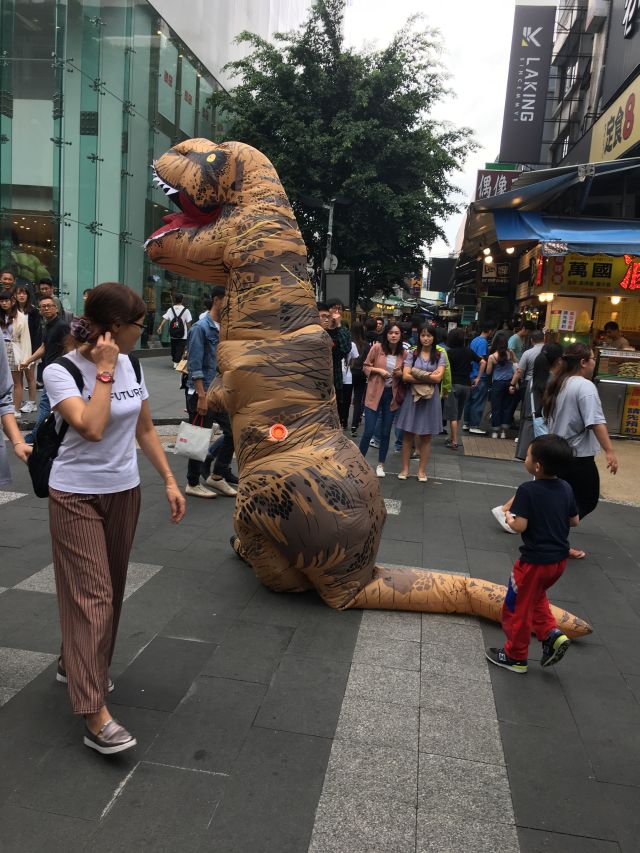
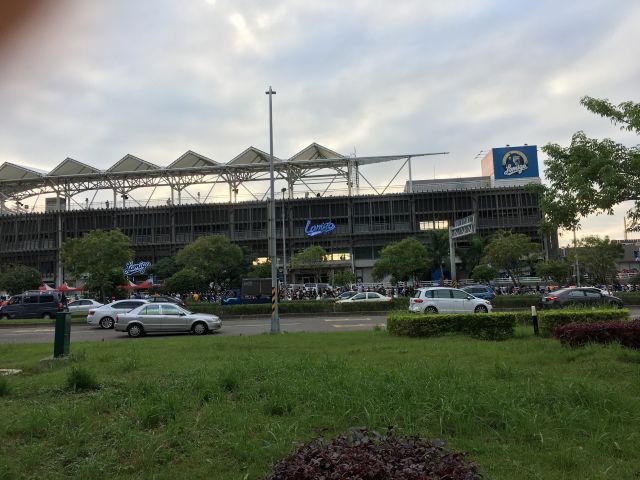


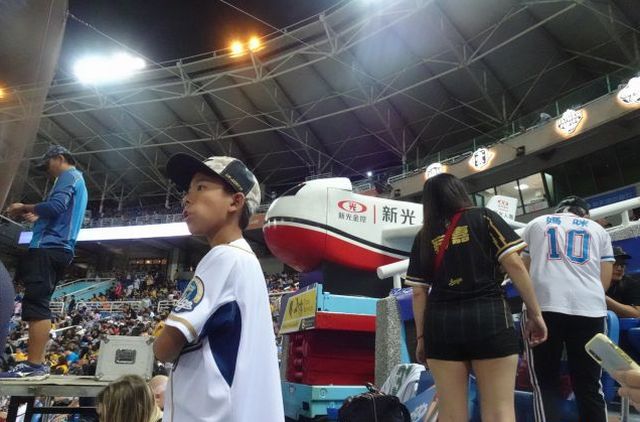
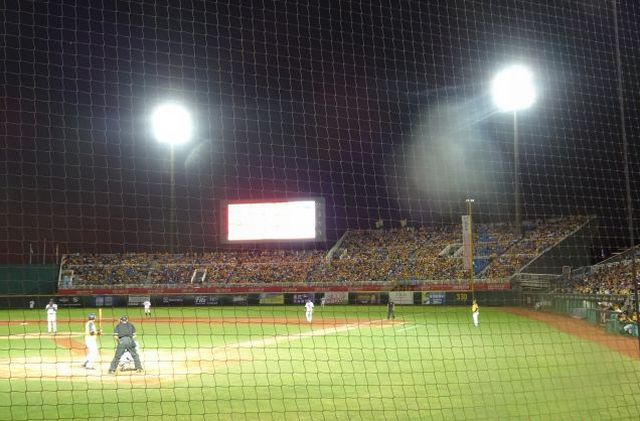
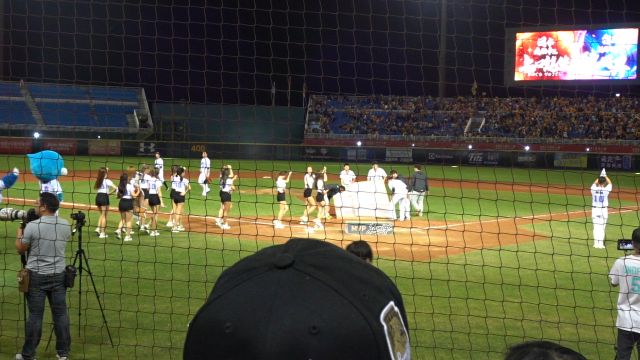
、
